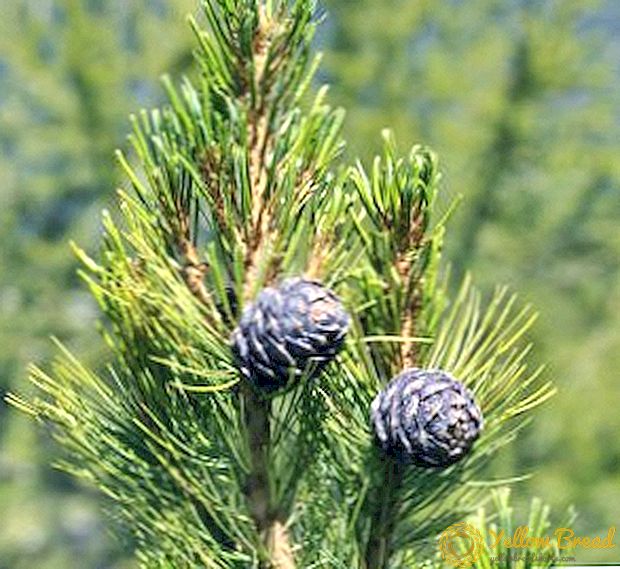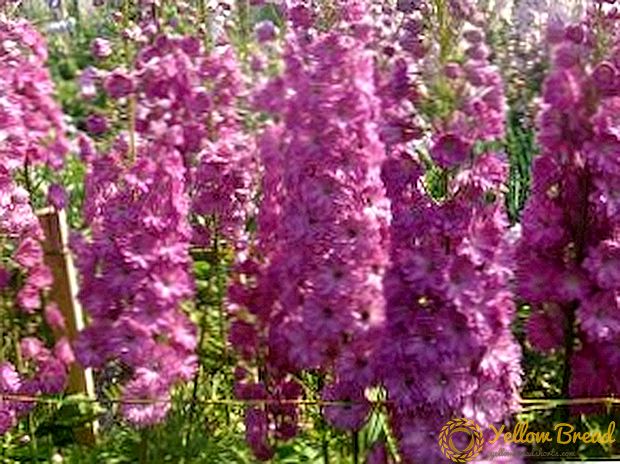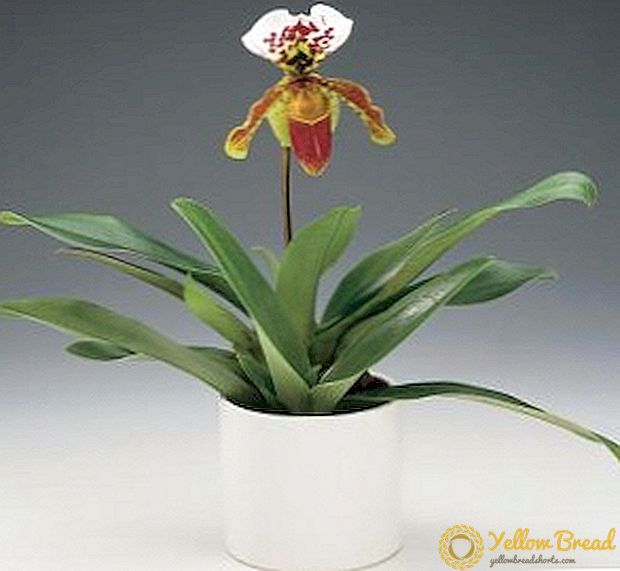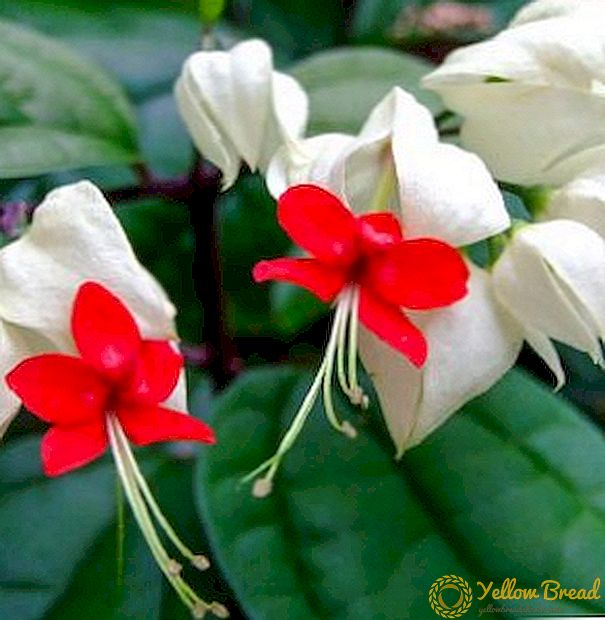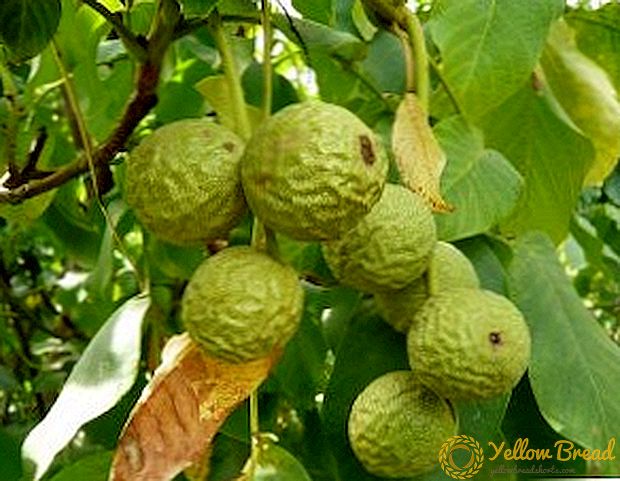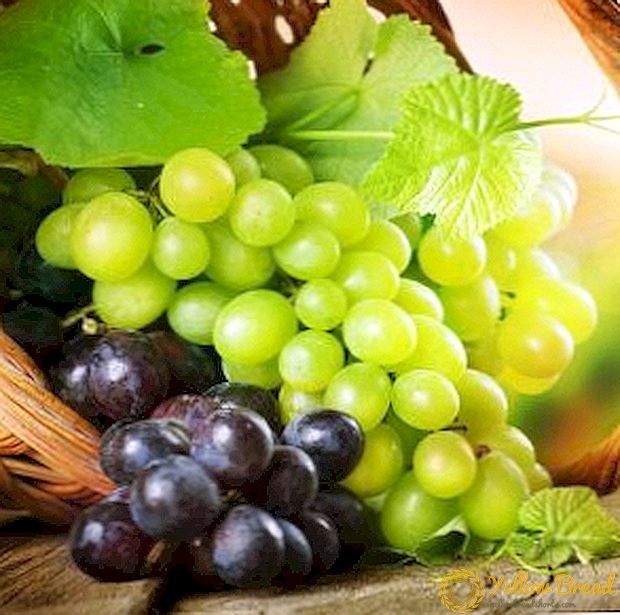 Currently gaining popularity carrot unaccustomed purple. Let's try to figure out what, apart from the color of the root, it differs from the classic varieties of carrots, which have useful and possibly unpleasant properties.
Currently gaining popularity carrot unaccustomed purple. Let's try to figure out what, apart from the color of the root, it differs from the classic varieties of carrots, which have useful and possibly unpleasant properties.
- Description
- Popular varieties
- "Purple Elixir"
- "Dragon"
- Composition and calorie
- Beneficial features
- Cooking Application
- Use in the treatment
- Harm and contraindications
Description
In terms of botany purple carrot belongs to the same subspecies as the habitual carrot (Daucus carota subsp. sativus) and is a biennial herb with a powerful root and characteristic feathery leaves. Externally, it differs only in the purple color of the root. There is an assumption that such a carrot was cultivated several thousand years ago. 
Popular varieties
Violet variety of carrots can not yet boast such a number of varieties as the classic. However, at present, some varieties are already available to amateur gardeners.
"Purple Elixir"
Root crops of this variety have a purple color. They are trichromatic in section: orange core, yellow intermediate and purple-violet outer layers. 
"Dragon"
This variety is distinguished by its roots with rich violet color with a yellow-orange core. They have a sweet taste and are especially rich in vitamins from group A. 
"Cosmic Purple"
This carrot belongs to the early ripening varieties. At the root of purple is only a rather thin skin, inside the same vegetable has a classic orange color, so that when cleaning it can turn from a violet into an ordinary carrot. 
Composition and calorie
The composition of this carrot is rich in minerals. 100 g of raw product contains the following substances:
- 200 mg of potassium;
- 63 mg of chlorine;
- 55 mg of phosphorus;
- 38 mg of magnesium;
- 27 mg of calcium;
- 21 mg of sodium;
- 6 mg of sulfur;
- 0.7 mg of iron;
- 0.4 mg zinc;
- 0.3 mg of aluminum;
- 0.2 mg manganese;
- 0.2 mg of boron;
- 99 μg of vanadium;
- 80 mcg copper;
- 55 µg of fluorine;
- 20 mcg of molybdenum;
- 6 mcg of nickel;
- 6 mcg of lithium;
- 5 mcg of iodine;
- 3 mcg of chromium;
- 2 mcg cobalt;
- 0.1 μg of selenium.
This variety is especially rich in vitamins A (ER) (2 mg per 100 g) and C (5 mg), as well as beta-carotene (12 mg). In addition, the composition contains vitamins of group B (B1, B2, B5, B6, B9) and vitamins E, K, PP, N. It should be noted that there are more beta-carotene in violet varieties than in traditional ones.  Caloric content of 100 g of raw vegetables is 35 kcal. It includes:
Caloric content of 100 g of raw vegetables is 35 kcal. It includes:
- 1.3 g of proteins;
- 5.7-6.9 g of carbohydrates;
- 0.1 g fat;
- 2.4 g dietary fiber;
- 1 g of ash;
- 86.6-88 g of water.
Beneficial features
The high content of beta-carotene, the presence of anthocyanins, as well as other substances and vitamins, gives violet varieties many useful properties, in particular its use in food allows you to:
- strengthen the immune system;
- normalize cholesterol levels;
- reduce the risk of cancer;
- improve vision
Cooking Application
In principle, purple varieties can be used in all dishes that use regular carrots. It can be pickled, boiled, fried, stewed, baked, used in salads, squeezed juice and eaten raw. Because of the unusual color, this root crop is used to decorate various dishes. 
Use in the treatment
A purple carrot has some positive effect in any form - even in a guy, even in a fried one. But, undoubtedly, the greatest effect can be achieved by eating it raw. Very good in this sense, carrot juice.
Harm and contraindications
In some cases, the root vegetable in question may cause allergic reactions - a skin rash, diarrhea, or swelling of the skin. In addition, excessive consumption of this vegetable with abundant beta-carotene in it can lead to yellowing of the skin.It is also recommended not to abuse carrots during pregnancy and breastfeeding.
As we can see, there are no specific contraindications to the use of violet carrot varieties. This vegetable has excellent taste, many useful properties, as well as original colors, which allows it to be widely used in various dishes. 

